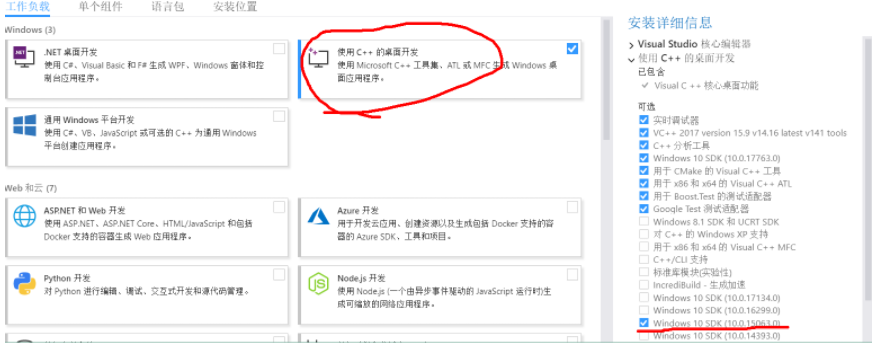我是新来的休息,我想开发一个web应用程序将与JIRA从一个SID(已经覆盖),并与对方惠普ALM连接。
什么我试图现在做到的是基本身份验证用PHP ALM但似乎无法进步。
这里是我的代码:
$handle=curl_init('http://192.168.1.7:8081');
$headers = array(
'Accept: application/xml',
'Content-Type: application/xml',
'Authorization: Basic YWRtaW46MTIzNA==',
);
$username='admin';
$password='1234';
$url = 'http://192.168.1.7:8081/qcbin/authentication-point/login.jsp';
curl_setopt_array(
$handle,
array(
CURLOPT_URL=>'http://192.168.1.7:8081/qcbin/rest/domains/default/projects/Ticomsoft/defects?login-form-required=y',
//CURLOPT_COOKIEFILE=>$ckfile,
CURLOPT_POST=>true,
//CURLOPT_HTTPGET =>true,
CURLOPT_COOKIEJAR=>$ckfile,
CURLOPT_VERBOSE=>1,
//CURLOPT_POSTFIELDS=>,
//CURLOPT_GETFIELDS=>'j_username=admin&j_password=1234&redirect-url=http://192.168.1.7:8081/myUiResource.jsps',
CURLOPT_SSL_VERIFYHOST=> 0,
CURLOPT_SSL_VERIFYPEER=> 0,
CURLOPT_RETURNTRANSFER=>true,
CURLOPT_FOLLOWLOCATION=>true,
CURLOPT_HEADER=>false,
CURLOPT_HTTPHEADER=> $headers,
CURLOPT_AUTOREFERER=>true
//CURLOPT_COOKIE=>
//CURLOPT_USERPWD=>"admin:yahala"
//CURLOPT_CUSTOMREQUEST=>"POST"
)
);
$result=curl_exec($handle);
$ch_error = curl_error($handle);
$response = curl_getinfo($handle);
print_r($response);
if ($ch_error) {
echo "cURL Error: $ch_error";
} else {
//var_dump(json_decode($result, true));
echo $result;
}
curl_close($handle);
?>
你可以看到有很多的垃圾我的试验和错误的进展。
开始了。 我跟着QC REST API文档,以研究为使QC期望所做出的请求。 我测试过它反对ALM11。 我是新来的卷曲为好,但这应该让你在和工作......
<?php
//create a new cURL resource
$qc = curl_init();
//create a cookie file
$ckfile = tempnam ("/tmp", "CURLCOOKIE");
//set URL and other appropriate options
curl_setopt($qc, CURLOPT_URL, "http://qualityCenter:8080/qcbin/rest/is-authenticated");
curl_setopt($qc, CURLOPT_HEADER, 0);
curl_setopt($qc, CURLOPT_HTTPGET, 1);
curl_setopt($qc, CURLOPT_RETURNTRANSFER, 1);
//grab the URL and pass it to the browser
$result = curl_exec($qc);
$response = curl_getinfo($qc);
//401 Not authenticated (as expected)
//We need to pass the Authorization: Basic headers to authenticate url with the
//Correct credentials.
//Store the returned cookfile into $ckfile
//Then use the cookie when we need it......
if($response[http_code] == '401')
{
$url = "http://qualityCenter:8080/qcbin/authentication-point/authenticate";
$credentials = "qc_username:qc_password";
$headers = array("GET /HTTP/1.1","Authorization: Basic ". base64_encode($credentials));
curl_setopt($qc, CURLOPT_URL, $url);
curl_setopt($qc, CURLOPT_HTTPGET,1); //Not sure we need these again as set above?
curl_setopt($qc, CURLOPT_HTTPHEADER, $headers);
//Set the cookie
curl_setopt($qc, CURLOPT_COOKIEJAR, $ckfile);
curl_setopt($qc, CURLOPT_RETURNTRANSFER, true);
$result = curl_exec($qc);
$response = curl_getinfo($qc);
//The response will be 200
if($response[http_code] == '200')
{
//Use the cookie for subsequent calls...
curl_setopt($qc, CURLOPT_COOKIEFILE, $ckfile);
curl_setopt($qc, CURLOPT_RETURNTRANSFER, true);
curl_setopt($qc, CURLOPT_URL, "http://qualityCenter:8080/qcbin/rest/domains/Your_Domain/projects/Your_Project/defects");
//In this example we are retrieving the xml so...
$xml = simplexml_load_string(curl_exec($qc));
print_r($xml);
//Call Logout
logout($qc,"http://qualityCenter:8080/qcbin/authentication-point/logout");
}
else
{
echo "Authentication failed";
}
}
else
{
echo "Not sure what happened?!";
}
//Close cURL resource, and free up system resources
curl_close($qc);
function logout($qc, $url)
{
curl_setopt($qc, CURLOPT_URL, $url);
curl_setopt($qc, CURLOPT_HEADER, 0);
curl_setopt($qc, CURLOPT_HTTPGET,1);
curl_setopt($qc, CURLOPT_RETURNTRANSFER, 1);
//grab the URL and pass it to the browser
$result = curl_exec($qc);
}
?>
让我知道它的工作!
谢谢,
丰富
以记住的是验证你必须用饼干做以下POST / qcbin / REST /网站会话后,重要的事情之一LWSSO
这将返回需要哪些QCSession和XSRF-TOKEN执行任何操作
这是我在Perl解决这个问题:认证步骤首先执行,设置然后可以没有问题地进行接下来的libcurl请求的cookie。 这是后台作业版本。 对于一个对话框应用程序,凭证可以通过从用户的输入传递代替。 此外,我不得不以https,而不是http做到这一点。 Perl程序还演示了如何指导卷曲的HTTPS(有一个很好的操作方法上http://unitstep.net/blog/2009/05/05/using-curl-in-php-to-access-https -ssltls保护的站点/ )。
#!/usr/bin/perl
# This script accesses, as a proxy, the REST API of the HP quality center
# Running it without query parameter, the complete list of defects is returned
# A query parameter, e.g. 'query={id[2283]}' will be passed as is to the HP QC API
# We are using the libcurl wrapper WWW::Curl::Easy
# The access is https, so a certificate has to be passed to libcurl
# The main point for using curl, however, is the authentication procedure:
# HP requires a preparative call to a special authentication service
# The authentication ticket will then be passed back as a cookie
# Only with this ticket, the real GET request on the defects can be performed
use WWW::Curl::Easy;
use strict;
use warnings;
use constant {
URL_QC_DEFECTS => "https://[QC DOMAIN]/qcbin/rest/domains/[DOMAIN]/projects/[PROJECT]/defects/",
URL_QC_AUTH => "https://[QC DOMAIN]/qcbin/authentication-point/authenticate",
PATH_CERT => "[PATH TO CREDENTIALS]" # contains certificate and credentials, see below
};
doRequest( URL_QC_DEFECTS . "?" . $ENV{QUERY_STRING} );
return 0;
sub doRequest {
my ($url,$cookies,$response) = (shift,"","");
eval {
my $curl = get_curl_instance(\$cookies,\$response);
authenticate( $curl );
get( $curl, $url );
if ($response =~ /.*?(<\?xml\b.*)/s) {
print "Content-Type:text/xml\n\n";
print $1;
}
else {
die "The response from HP QC is not in XML format";
}
};
if ($@) {
print "Content-Type:text/plain\n\n$@";
}
}
sub get_curl_instance {
my ($cookie,$response) = @_;
my $curl = WWW::Curl::Easy->new( );
open( my $cookiefile, ">", $cookie) or die "$!";
$curl->setopt( CURLOPT_COOKIEFILE, $cookiefile );
open( my $responsefile, ">", $response) or die "$!";
$curl->setopt( CURLOPT_WRITEDATA, $responsefile );
$curl->setopt( CURLOPT_SSL_VERIFYPEER, 1);
$curl->setopt( CURLOPT_SSL_VERIFYHOST, 2);
$curl->setopt( CURLOPT_CAINFO, cert() );
$curl->setopt( CURLOPT_FOLLOWLOCATION, 1 );
return $curl;
}
sub authenticate {
my $curl = shift;
my ($rc,$status);
$curl->setopt( CURLOPT_URL, URL_QC_AUTH );
$curl->setopt( CURLOPT_USERPWD, cred( ) );
if (($rc = $curl->perform( )) != 0) {
die "Error Code $rc in curl->perform( ) on URL " . URL_QC_AUTH;
}
if (($status=$curl->getinfo(CURLINFO_HTTP_CODE))!="200") {
die "HTTP-Statuscode $status from authentication call";
}
}
sub get {
my ($curl,$url) = @_;
my ($rc,$status);
$curl->setopt( CURLOPT_URL, $url );
$curl->setopt( CURLOPT_HEADER, { Accept => "text/xml" } );
if (($rc = $curl->perform( )) != 0) {
die "Error Code $rc from defects request";
}
if (($status=$curl->getinfo(CURLINFO_HTTP_CODE))!="200") {
die "HTTP Statuscode $status from defects request";
}
}
sub cred {
open CRED, PATH_CERT . '/.cred_qc' or die "Can't open credentials file: $!";
chomp( my $cred = <CRED>);
close CRED;
return $cred;
}
sub cert {
return PATH_CERT . '/qc.migros.net.crt';
}


